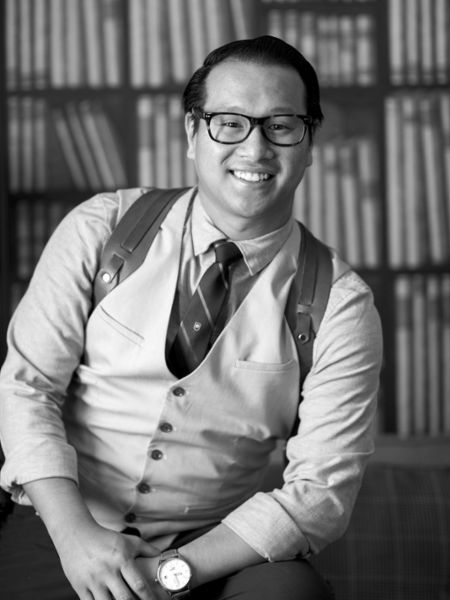Winner Number One
This Porsche 911 first touched American soil in Florida, where it’s now on display in a museum. It also wrote history in that state as the first 911 to win a major international circuit race: the GT class in the 1966 running of the 24 Hours of Daytona.
-
Winner Number One
Naples is located in southwest Florida. Palm trees sway gently in the breeze. Manicured lawns and parks dot the landscape. It has amazing beaches. Fishermen gather on Naples Pier. A Beverly Hills on the Gulf of Mexico.
The city is the county seat of Collier County, named for the erstwhile entrepreneur and landowner Barron Collier. The Collier Collection will ring a bell for any sports-car aficionado. A black Porsche 911 dazzles in the spotlight. White stripes, number 18, no chrome, no dramatic spoiler. It’s understated, but it was nonetheless the first 911 to score a class victory in an internationally renowned circuit race. An event of many colorful anecdotes. And in the midst of it all, the former Porsche race director and driver Huschke von Hanstein.
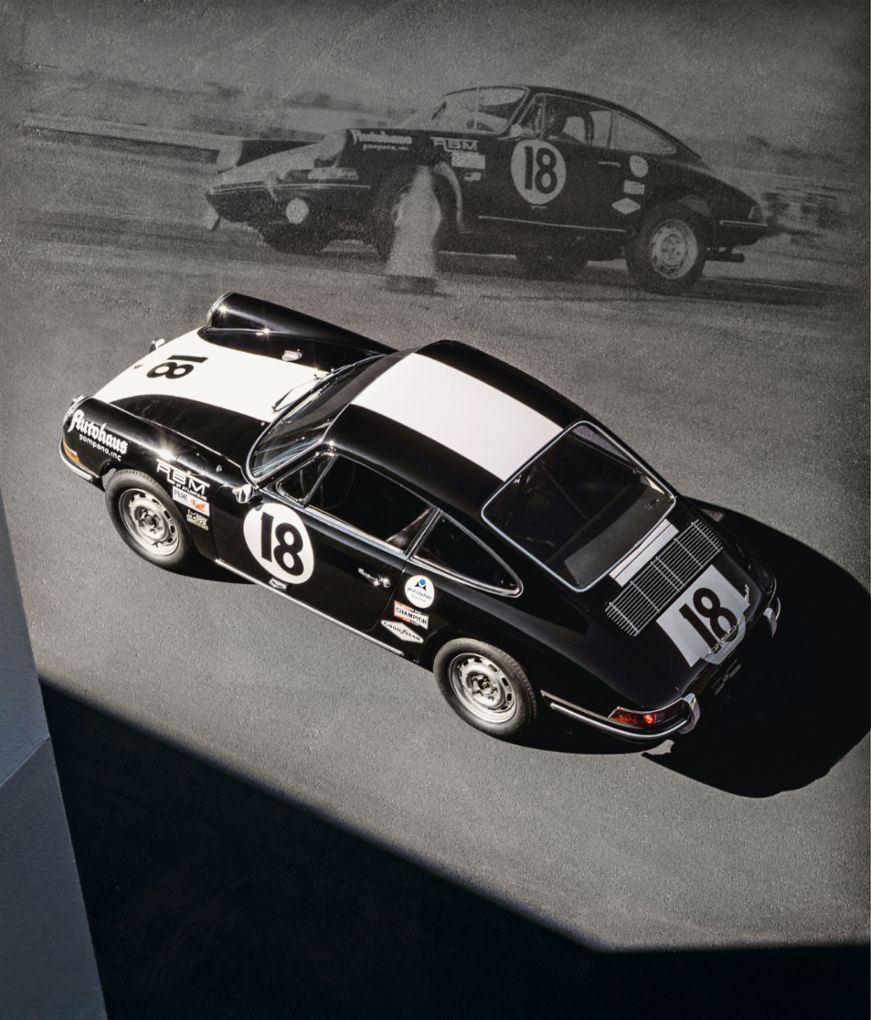
Fritz Sittig Enno Werner von Hanstein— a name like an opera—had choreographed the 24 Hours of Daytona to perfection in 1966. The Porsche brand was still quite young. In the eighteenth year since its founding, however, race director von Hanstein wanted to show just how mature it was already. Daytona was to be the stage for the brand-new 906. Anything but a class victory was out of the question. Five 904 Carrera GTSs were on hand as a sort of security detail. Hans Herrmann and Herbert Linge would put the 906 far out in front—von Hanstein was sure of that. And this in the face of formidable competition: nine Ford GT 40s, including three new GT 40 Mk IIs, as well as eight Ferrari 250 LMs and a Ferrari 365 P2. Von Hanstein was reckoning with all of them, just not the unassuming, practically series-standard black Porsche 911 in the midst of the throng of GT cars.
Confusion
Von Hanstein looked up: Where did that 911 come from? At that point there were just a couple hundred of the relatively new coupes in the United States and this was just the second 911—chassis number 300 128—that Porsche had delivered to Herbert Brundage, a dealer in Jacksonville, Florida. He had used the car as a demonstration vehicle and sold it in 1965 with thirty thousand miles on the odometer. The new owner was Jack Ryan, a Volkswagen dealer in the Atlanta area who was an active member of the Porsche Club of America (PCA) with a passion for racing and GT cars in particular. His new acquisition, he thought, could be a winner.
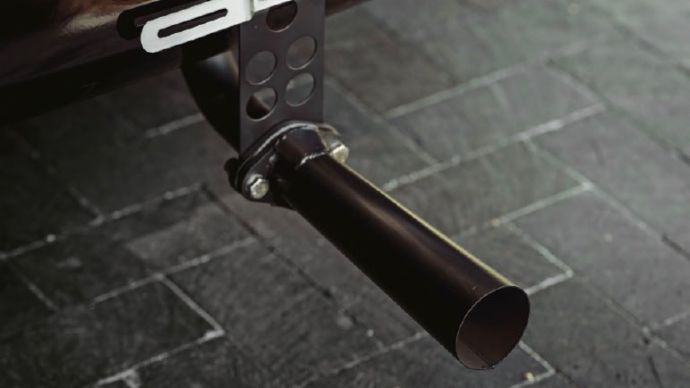
Chassis number 300 128 and engine number 900 283:
To this day, Jack Ryan’s Porsche 911 has been maintained largely in its 1966 racing condition—including small details and the hand-built exhaust pipe.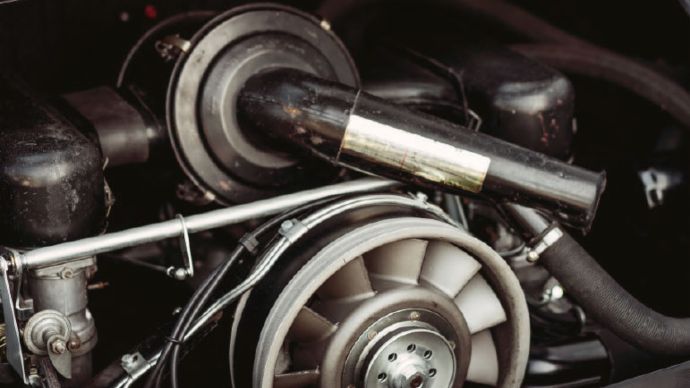
Think big
Not one to merely get his toes wet, Ryan was looking to make a splash. He drove straight to Florida. The next endurance marathon in Daytona was coming up. He figured he had a chance in the 2.0-liter GT class, which was traditionally a rather thin field. Ryan got two friends from the PCA to join him: Bill Bencker and Lin Coleman. Together, they’d pull it off somehow. They quickly discovered that Porsche was disinclined to help with the race modifications. The 911 was simply too young. And the company itself was entirely focused on racing the 906.
Ferdinand Piëch, a year into his stint as the head of the Porsche development department, had sent a 911 to the Monte Carlo Rally in early 1965. Herbert Linge and Peter Falk had made the most of the opportunity to score a convincing fifth-place finish in the overall classification, but the mood was hardly exuberant for all that: the “Monte” was regarded as a test-drive. The victories of hill-climb specialist Eberhard Mahle in his private 911 in the summer of 1965 were likewise relegated to the footnotes. No one at the time would have imagined starting a series 911 in a twenty-four-hour race, let alone in Daytona, with its bombastic banked walls and grinding full-speed sections.
Improvisation
For team Ryan, improvisation was the watchword. First they pitched the passenger seat, then came the hand-built sport exhaust: a big pipe positioned right in the center of the tail. To protect the driver, a rudimentary Targa bar was installed. Additional light was provided by two headlights installed below the bumper—an important consideration in the long Daytona night. The lights illuminating start number 18 were dim by contrast but required so that the race direction could identify the numbers on the doors in the dark. In the few test-drives, Ryan and colleagues had tested race tires on the 4.5 × 15-inch series steel rims. Modifying the chassis and brakes were out of the question; there were no parts.
The car came standard with an antenna, speakers, and AM radio on the airwaves. But a radio has some weight to it. And in a race, weight costs time. Maybe the team dispensed with the receiver, or maybe they wanted some entertainment during the endless hours of racing—no one knows. In pictures from the time, however, the antenna can be seen extended.
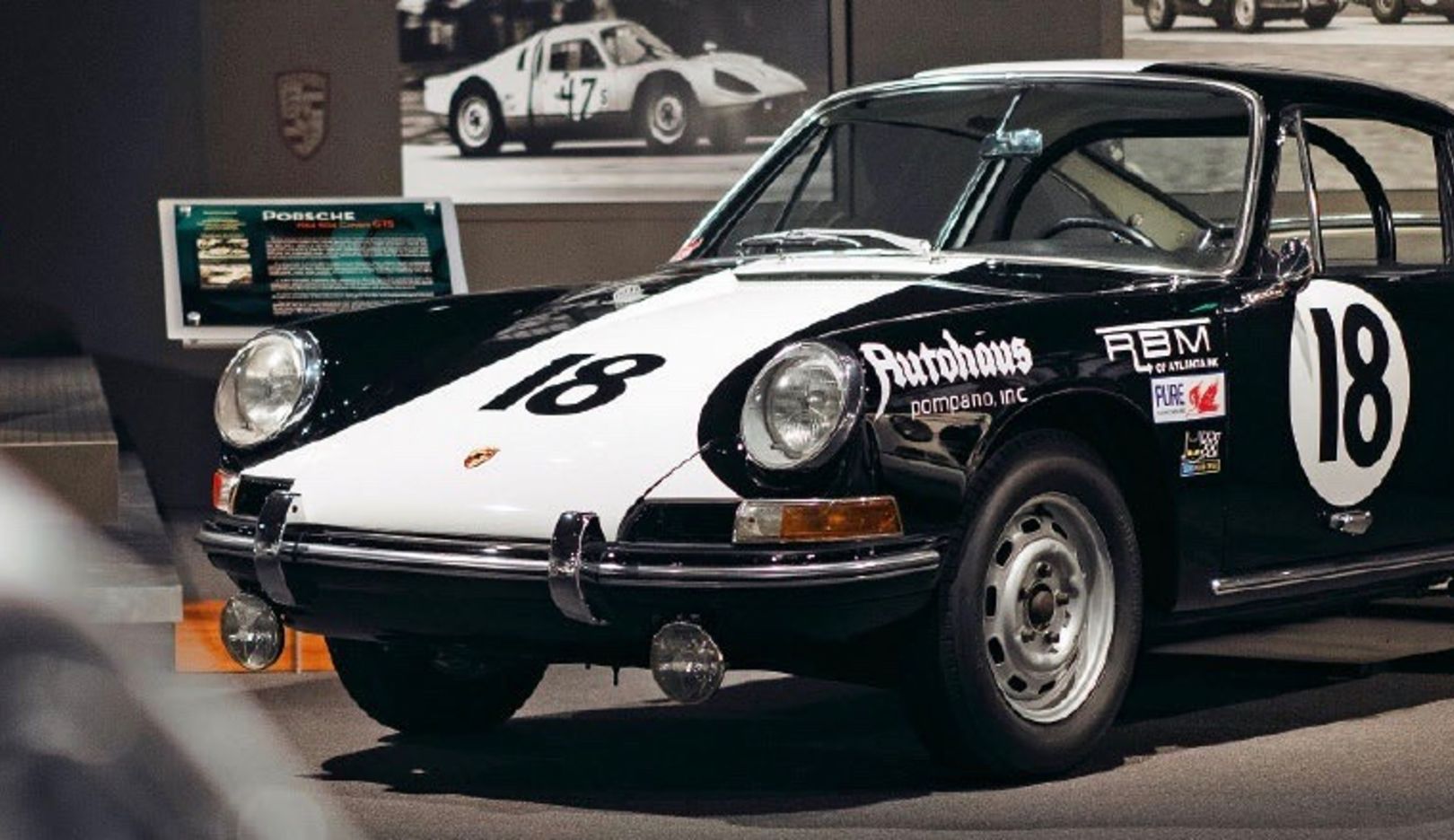
Obstinacy
It couldn't be helped: in a long-distance call to Germany, Huschke von Hanstein was obliged to inform headquarters that the illustrious race would be contested by a 911 with over thirty thousand miles on the dial and a series boxer engine under the hood. Consternation at the Porsche head office. What would happen if the new Porsche model broke down in its very first appearance in a circuit race on a major international stage? Which was a distinct possibility. Diminished prestige, to be sure. Schadenfreude. Snickering in the pits. Unthinkable! Zuffenhausen leaned on Huschke von Hanstein to do everything in his power to keep the 911 from entering.
Not drive? Just go home? Not with Ryan! “It’s my car now and I’m entering it,” he dismissed von Hanstein abruptly. Ryan had legally acquired the car. The 911 had been built in accordance with the rules and accepted by the organizers. He had set his mind on driving in Daytona—and that was exactly what he would do. Zuffenhausen couldn’t do a thing about it. Thus rebuffed, von Hanstein stomped back to the Porsche pit. It was time for a new plan: if you can’t beat them, join them.
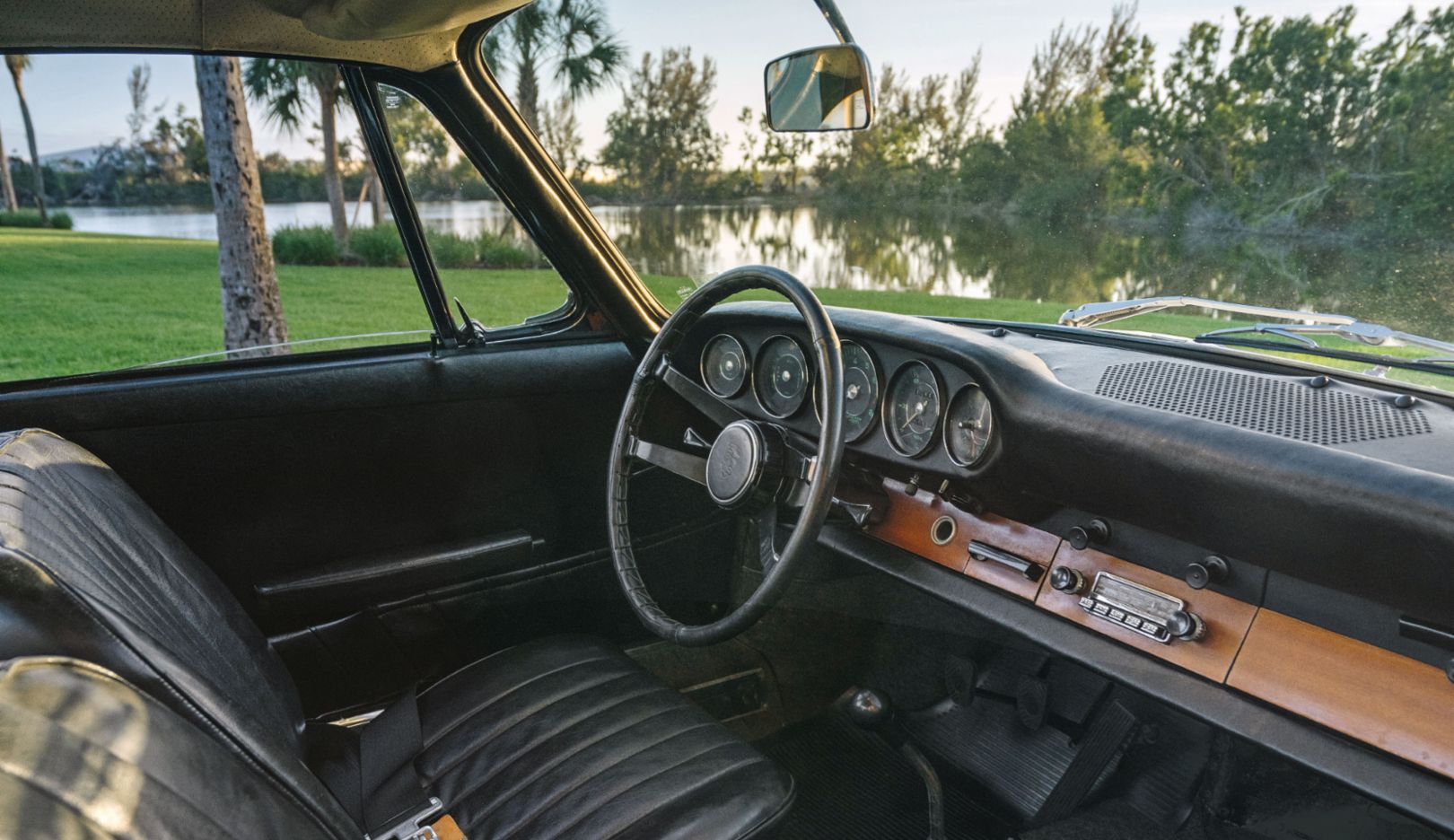
Vindication
Ryan’s calculation: his car—its mere 130 hp hopelessly outmatched by the favorites—could only land somewhere near the front with a steady drive. His race began on February 5, 1966, at 3:00 p.m. from the thirty-ninth spot on the grid: not overly fast, but posting consistent lap times. Never mind winning, just get to the finish line. To anyone who wanted to pass the 911: go right ahead. The driver trio ticked off one lap after the other on the 6.132-kilometer track without a hitch.
By 6:00 p.m., car number 18 was in thirty-third place in the overall classification; three hours later in twenty-fifth place; and just before 8:00 a.m., the organizers were reporting the car in nineteenth place. That was the lead in the two-liter GT class. Huschke von Hanstein was thrilled. If there were any problems, he magnanimously informed the Ryan team, his Porsche factory mechanics would be at their service.
“It’s my car now and I’m entering it.” Jack Ryan
But number 18 didn’t need any assistance. The 911 was running like a charm. The team refueled regularly, checked the oil level, and changed drivers and tires as necessary. But if the race was mercifully free of adverse excitement, the finish was decidedly spectacular. After twenty-four hours and 548 laps, the car took sixteenth place in the overall classification—the winner of the GT class up to a two-liter displacement and ahead of far more powerful competitors from other classes. Its only class rival had dropped out with busted connecting rods. Von Hanstein was doubly delighted: the Porsche 906 had also scored a class win and taken sixth overall behind four heavily favored Ford GT 40s and the Ferrari 365 P2.
Ryan drove the 911 again at Sebring, where he took second in his class despite a blown piston. After multiple changes of ownership and many races, the car wound up in Ohio. For four decades it served as a private car before the last owner, Christian Zugel, donated it to the Collier Collection at the Revs Institute in Naples. A milestone in Porsche racing history—practically in its original state, with the original engine and the original transmission. The unmistakable look of a winner.
Collier Collection
In 1986 Miles Collier acquired the collection of the race-car driver and designer Briggs Cunningham. From that base, he created one of the world’s most important automobile museums: the Revs Institute. The collection includes twenty of the most important Porsche race cars. For more information: revsinstitute.org


